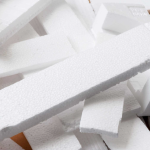
Roofing website design is a critical part of any roofing business. It can be the first and only impression a potential customer has of your business, so it’s essential to make sure your website represents your company well. This article will discuss ten best practices for roofing website design.
By following these best practices, you can ensure that your website will be user-friendly, informative, and representative of your company in the best light possible.
Read on for our top tips if you’re ready to improve your roofing website design.

1. Keep Your Website Design Simple And Easy To Navigate
The first step to an effective roofing website design is keeping it simple. Your website should be easy for visitors to understand and navigate without overloading with too much information.
Too much text, images, or links can be overwhelming for visitors and make your website difficult. Stick to the essentials and keep your design clean and organized.
2. Use High-Quality Images And Videos To Showcase Your Work
High-quality images and videos are a great way to show potential customers what you do and how well you do it. Include photos or videos of your roofing projects, both before and after, to give visitors an idea of the quality of your work.
You can also use images and videos to show off any awards or recognition your company has received. This can help build trust and credibility with potential customers.
If you don’t have any photos or videos of your own, there are plenty of stock images and videos available online that you can use. Just be sure to choose high-quality and relevant ones for your business.
3. Make Sure Your Website Is Mobile-Friendly
In today’s world, your website must be mobile-friendly. More and more people are using their phones and tablets to browse the internet, so it’s crucial that your website can be easily viewed on these devices.
If your website isn’t mobile-friendly, you could be losing out on potential customers. Make sure your website design is responsive to be viewed on any device.
You can also use mobile-specific design features, such as click-to-call buttons and GPS directions to improve the user experience for mobile visitors.
4. Incentivize Customers To Leave Positive Reviews
Positive reviews are a great way to build trust and credibility with potential customers. If you have happy customers, ask them to review your website or popular review sites like Google and Yelp.
You can also offer incentives, such as discounts or coupons, to encourage customers to leave positive reviews. Just be sure not to offer anything that would violate the terms of service of the review site.
5. Regularly Update Your Website Content
Finally, it’s essential to update your website content regularly. This includes both the text and the images on your website.
If you have any new projects or awards to showcase, add them to your website. You should also remove outdated information, such as old contact information or expired coupons.
By keeping your website content up-to-date, you can ensure that visitors always have the most accurate information.
These are just a few of the best practices for roofing website design. By following these tips, you can be sure that your website will be user-friendly, informative, and representative of your company in the best light possible. Contact us today if you’re ready to improve your roofing website design. We’ll be happy to help you get started.

Joey is your friendly neighborhood knowledge seeker. From science to history, he’s on a quest to unravel the mysteries of the universe and share his discoveries with you. Dive into his articles for a dose of curiosity and wonder.












